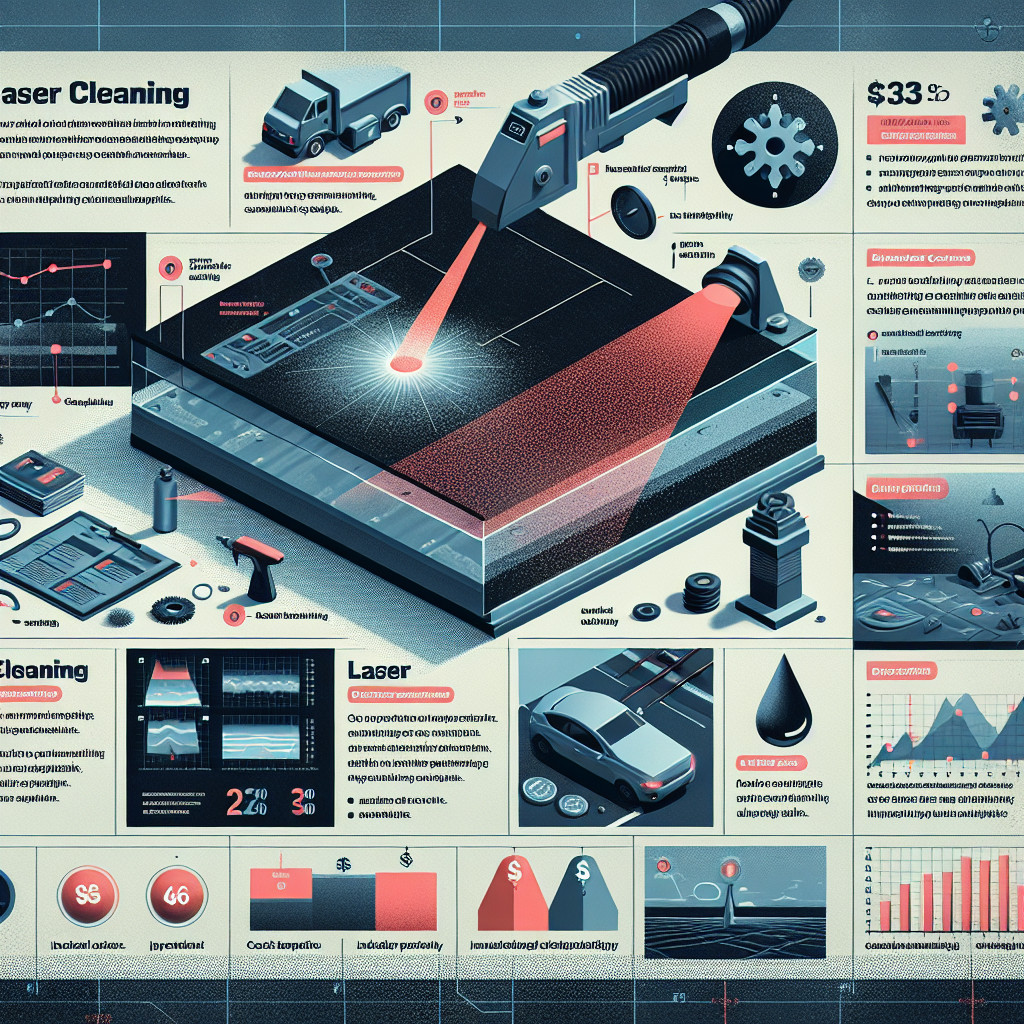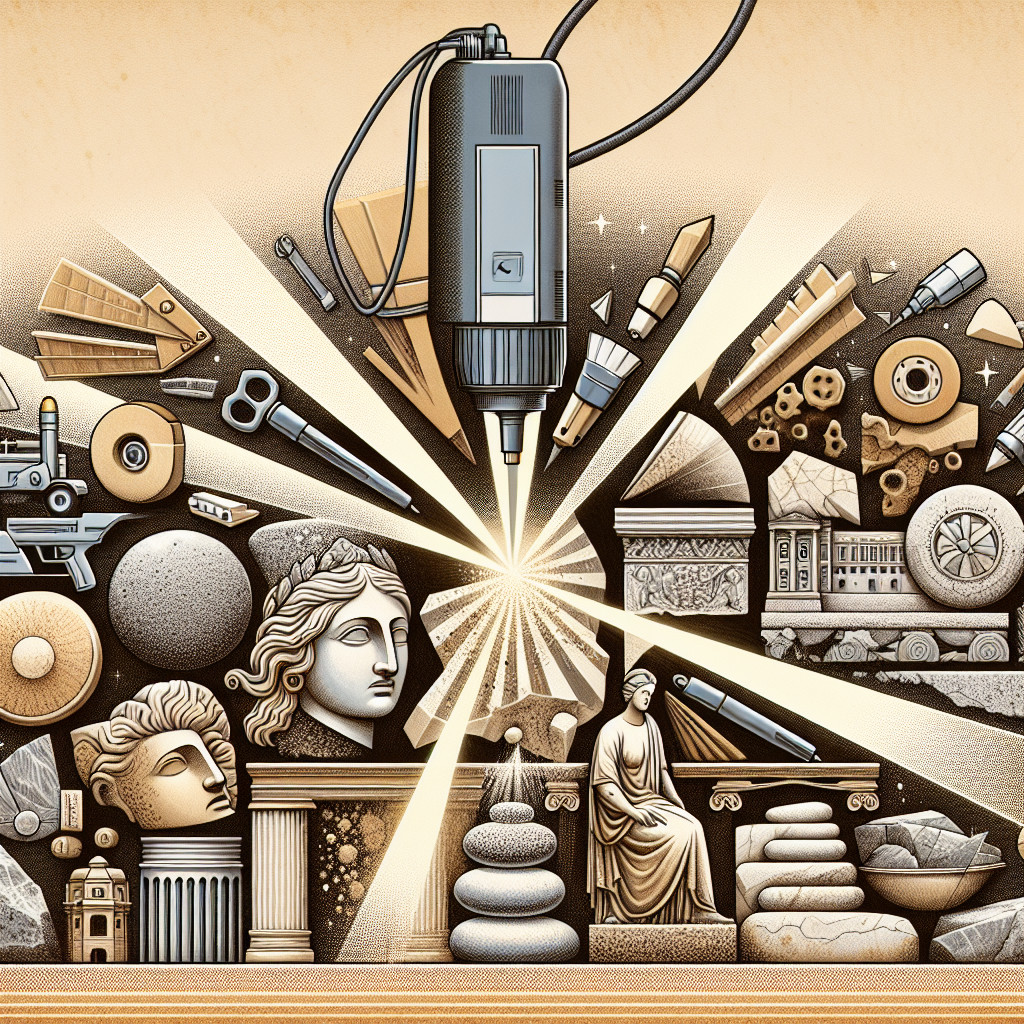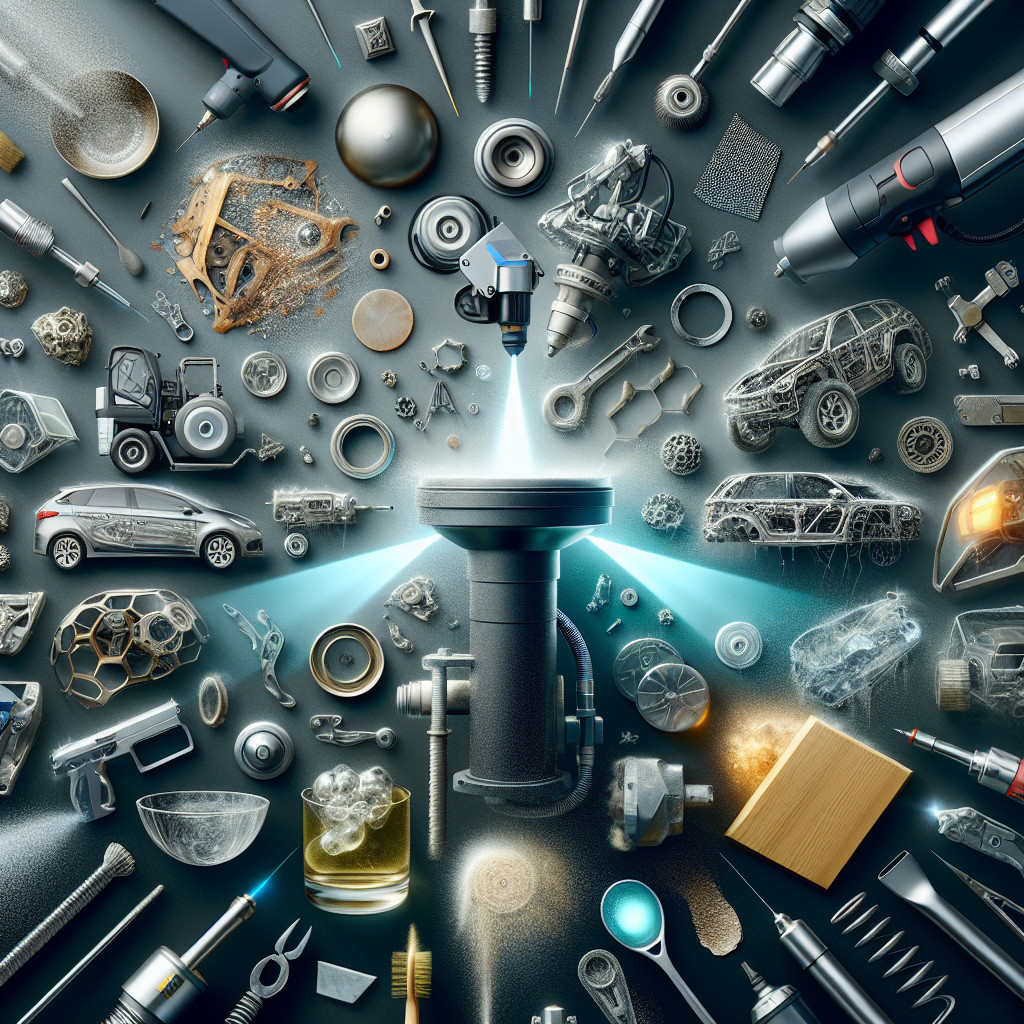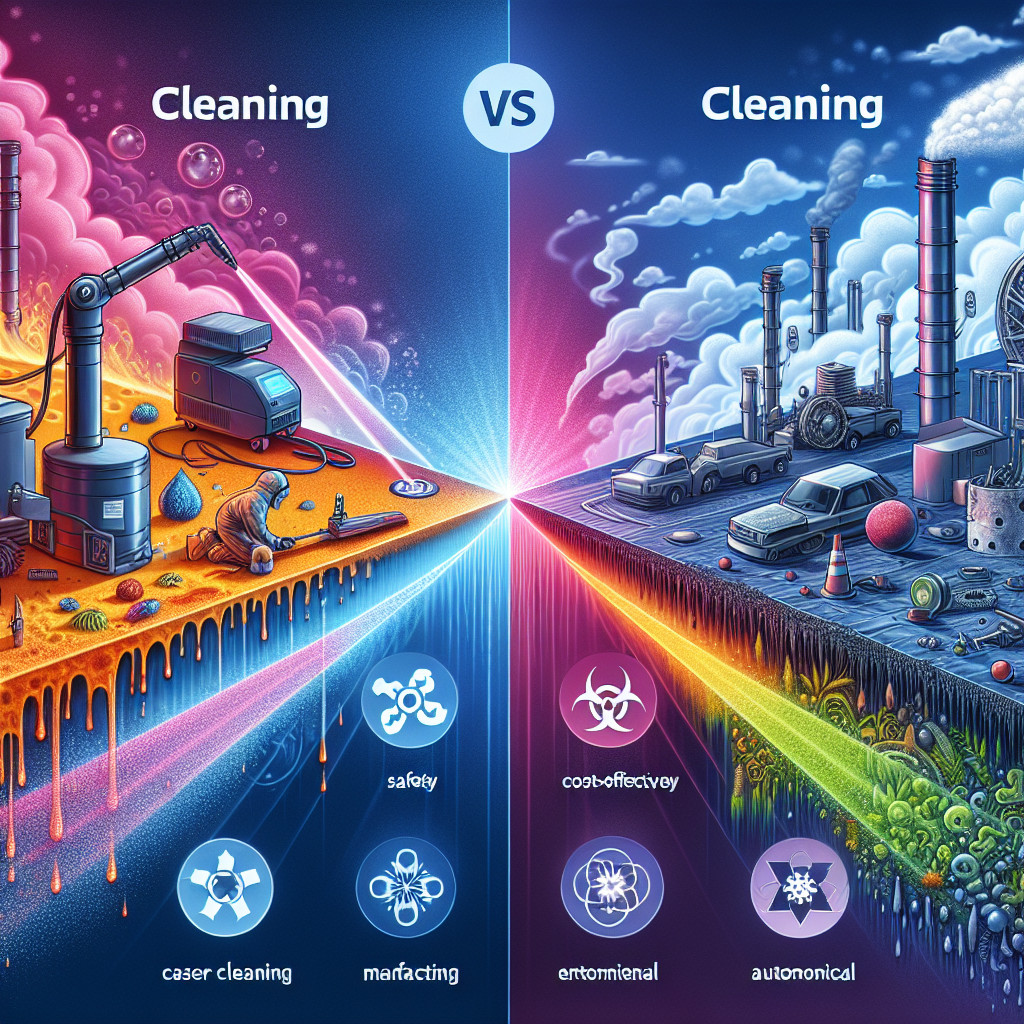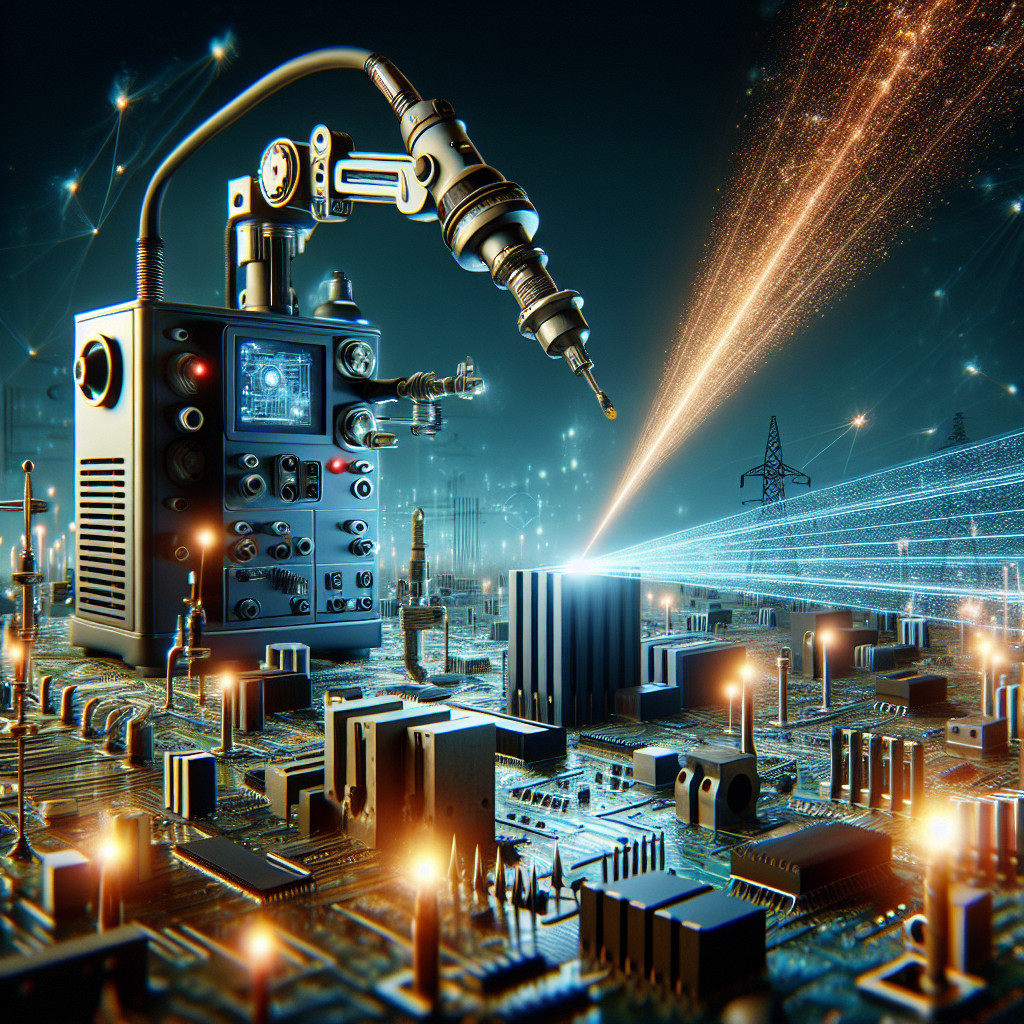
- The principles of laser cleaning technology
- Applications of laser cleaning in various industries
- Comparison of energy consumption between laser cleaning and other cleaning methods
- Innovations in laser cleaning technology for increased energy efficiency
- The importance of proper maintenance and calibration for energy-efficient laser cleaning
- The integration of laser cleaning with other energy-efficient technologies
- The impact of laser cleaning on reducing greenhouse gas emissions
- The energy efficiency of laser cleaning in removing paint and coatings from surfaces
The principles of laser cleaning technology
How does laser cleaning work?
Laser cleaning works by using a high-powered laser beam to vaporize contaminants on a surface. The laser beam is focused on the material to be cleaned, and the energy from the laser heats up and vaporizes the contaminants, leaving behind a clean surface. The process is highly precise and can be controlled to remove only the contaminants without damaging the underlying material.
Key principles of laser cleaning technology:
- Non-contact cleaning: Laser cleaning does not require physical contact with the surface, reducing the risk of damage to delicate materials.
- Environmentally friendly: Laser cleaning does not use any chemicals or solvents, making it an eco-friendly cleaning method.
- Highly efficient: Laser cleaning is a fast and efficient way to remove contaminants from surfaces, saving time and labor costs.
- Precision cleaning: Laser cleaning can be controlled to remove contaminants with high precision, making it ideal for cleaning intricate parts and surfaces.
Applications of laser cleaning technology:
Laser cleaning technology has a wide range of applications across various industries, including:
- Automotive industry: Laser cleaning is used to remove paint, rust, and other contaminants from car parts.
- Manufacturing industry: Laser cleaning is used to clean molds, tools, and other equipment in manufacturing processes.
- Historical preservation: Laser cleaning is used to clean delicate artifacts and historical buildings without causing damage.
- Electronics industry: Laser cleaning is used to remove solder and other contaminants from electronic components.
Overall, laser cleaning technology offers a highly efficient and environmentally friendly way to clean a wide range of materials. Its non-contact cleaning method and precision make it an ideal choice for industries looking for a fast and effective cleaning solution.
Keywords:
Laser cleaning, technology, contaminants, surfaces, non-contact, environmentally friendly, efficient, precision, applications, industries
Long-tail phrases:
Revolutionary method of removing contaminants, high-powered lasers, environmentally friendly cleaning method, fast and efficient way to remove contaminants, precision cleaning for intricate parts
#laser #cleaning #technology #contaminants #surfaces #noncontact #environmentallyfriendly #efficient #precision #applications #industries
#revolutionarymethodofremovingcontaminants #highpoweredlasers #environmentallyfriendlycleaningmethod #fastandefficientwaytoremovecontaminants #precisioncleaningforintricateparts
Applications of laser cleaning in various industries
1. Automotive industry 🚗
– Laser cleaning is used to remove paint, rust, and other contaminants from car bodies and parts.
– It is also used to clean welding seams and prepare surfaces for painting.
2. Aerospace industry ✈️
– Laser cleaning is used to remove coatings, adhesives, and contaminants from aircraft components.
– It is also used to clean engine parts and turbine blades.
3. Manufacturing industry 🏭
– Laser cleaning is used to remove rust, scale, and paint from metal surfaces.
– It is also used to clean molds, dies, and tooling.
4. Marine industry ⛴️
– Laser cleaning is used to remove barnacles, rust, and marine growth from ship hulls.
– It is also used to clean propellers and other underwater components.
5. Electronics industry 📱
– Laser cleaning is used to remove solder residues, flux, and other contaminants from circuit boards.
– It is also used to clean electronic components and connectors.
6. Historical preservation 🏛️
– Laser cleaning is used to remove dirt, grime, and graffiti from historical monuments and buildings.
– It is also used to clean delicate artifacts and sculptures.
Overall, laser cleaning offers a versatile and precise cleaning solution for a wide range of industries. Its non-contact and non-abrasive nature make it ideal for cleaning sensitive surfaces without causing damage. With its ability to remove contaminants quickly and efficiently, laser cleaning has become an essential tool for industries looking to improve their cleaning processes.
#laser #cleaning #industries #automotive #aerospace #manufacturing #marine #electronics #historicalpreservation
Keywords: laser cleaning, industries, automotive, aerospace, manufacturing, marine, electronics, historical preservation
Long-tail phrases: laser cleaning technology in various industries, benefits of laser cleaning, applications of laser cleaning technology.
Comparison of energy consumption between laser cleaning and other cleaning methods
Energy consumption comparison:
1. Laser cleaning: Laser cleaning uses a high-energy laser beam to vaporize contaminants from surfaces. The energy consumption of laser cleaning depends on the power of the laser beam and the size of the area being cleaned. While laser cleaning can be energy-intensive, it is often more efficient than other cleaning methods in terms of energy consumption per unit area cleaned.
2. Chemical cleaning: Chemical cleaning involves the use of cleaning agents and solvents to remove contaminants from surfaces. The energy consumption of chemical cleaning is relatively low, but it can be harmful to the environment and human health due to the use of toxic chemicals.
3. Mechanical cleaning: Mechanical cleaning involves the use of abrasive materials or tools to physically remove contaminants from surfaces. The energy consumption of mechanical cleaning is moderate, but it can be time-consuming and labor-intensive compared to laser cleaning.
Advantages of laser cleaning:
– Energy efficiency: Laser cleaning is often more energy-efficient than other cleaning methods due to its precise and targeted cleaning process.
– Environmentally friendly: Laser cleaning does not require the use of chemicals or solvents, making it environmentally friendly.
– Non-contact cleaning: Laser cleaning is a non-contact cleaning method, which reduces the risk of damage to delicate surfaces.
In conclusion, the energy consumption of laser cleaning is comparable to or even more efficient than other traditional cleaning methods. With its energy efficiency, environmental friendliness, and non-contact cleaning capabilities, laser cleaning is a promising technology for various industries.
#energyconsumption #lasercleaning #cleaningmethods #environmentallyfriendly #noncontactcleaning
frazy kluczowe:
– Comparison of energy consumption between laser cleaning and chemical cleaning
– Energy efficiency of laser cleaning compared to mechanical cleaning
– Advantages of laser cleaning in terms of energy consumption
Innovations in laser cleaning technology for increased energy efficiency
Another important advancement in laser cleaning technology is the use of automation and robotics to improve efficiency and precision. Automated laser cleaning systems can be programmed to target specific areas on a surface, reducing the risk of damage to surrounding materials. This level of precision ensures a more thorough and consistent cleaning process, leading to higher quality results.
Furthermore, the development of more compact and portable laser cleaning systems has made this technology more accessible to a wider range of industries. These smaller systems are easier to transport and set up, allowing for on-site cleaning without the need for large, stationary equipment. This flexibility makes laser cleaning a viable option for industries such as automotive, aerospace, and electronics manufacturing.
Overall, the innovations in laser cleaning technology are driving towards increased energy efficiency, reduced environmental impact, and improved cleaning results. As this technology continues to evolve, we can expect to see even greater advancements in the future, making laser cleaning an essential tool for sustainable surface cleaning.
- Energy efficiency
- Environmental impact
- Laser cleaning technology
- Automation
- Precision cleaning
- #energyefficiency
- #laser cleaning
- #innovation
- #sustainability
- #environment
The importance of proper maintenance and calibration for energy-efficient laser cleaning
Proper maintenance of laser cleaning equipment involves regular inspections, cleaning, and lubrication of components. This helps prevent wear and tear, prolonging the lifespan of the equipment and ensuring consistent performance. Additionally, regular maintenance can help identify and address any potential issues before they escalate into more serious problems.
Calibration is another key aspect of ensuring energy-efficient laser cleaning. Proper calibration ensures that the laser beam is focused and directed accurately, maximizing its effectiveness and minimizing energy consumption. Without calibration, the laser may not be able to effectively remove contaminants, leading to wasted energy and reduced cleaning efficiency.
It is important to note that maintenance and calibration are not one-time tasks, but ongoing processes that should be performed regularly. By investing time and resources into proper maintenance and calibration, businesses can maximize the efficiency and effectiveness of their laser cleaning equipment, ultimately saving time and money in the long run.
Key benefits of proper maintenance and calibration for energy-efficient laser cleaning include:
– Improved cleaning performance
– Extended equipment lifespan
– Reduced energy consumption
– Cost savings
– Environmental benefits
Hashtags: #laser #cleaning #maintenance #calibration #energyefficiency
Keywords: laser cleaning, maintenance, calibration, energy efficiency, contaminants
Long-tail phrases: importance of regular maintenance for laser cleaning equipment, benefits of proper calibration for energy-efficient cleaning.
The integration of laser cleaning with other energy-efficient technologies
Benefits of integrating laser cleaning with other energy-efficient technologies
One of the key benefits of integrating laser cleaning with other energy-efficient technologies is the ability to reduce overall energy consumption. By combining laser cleaning with technologies such as solar power or energy storage systems, it is possible to minimize the energy required to operate the cleaning equipment. This not only helps to lower operating costs but also reduces the carbon footprint of the cleaning process.
Another advantage of integrating laser cleaning with other energy-efficient technologies is the potential for increased automation and efficiency. By incorporating sensors, robotics, and artificial intelligence into the cleaning process, it is possible to optimize cleaning parameters and ensure consistent results. This can lead to faster cleaning times, improved quality control, and reduced downtime.
Examples of integrated laser cleaning systems
There are several examples of integrated laser cleaning systems that demonstrate the potential of combining laser technology with other energy-efficient technologies. One such example is a solar-powered laser cleaning system that uses photovoltaic panels to generate electricity for the laser equipment. This system is not only environmentally friendly but also cost-effective, as it reduces the need for grid electricity.
Another example is a laser cleaning system that is integrated with a battery storage system. This allows the cleaning equipment to operate during periods of low solar power generation or high energy demand, ensuring continuous operation and maximum efficiency. By storing excess energy during off-peak hours, this system can also help to reduce peak energy consumption and lower electricity costs.
Conclusion
Integrating laser cleaning with other energy-efficient technologies offers a range of benefits, including reduced energy consumption, increased automation, and improved efficiency. By harnessing the power of lasers in combination with solar power, energy storage, and other technologies, it is possible to create a more sustainable and cost-effective cleaning solution. As the demand for environmentally friendly cleaning methods continues to grow, the integration of laser cleaning with other energy-efficient technologies is likely to play an increasingly important role in the future of cleaning technology.
#laser #cleaning #energyefficient #technology #sustainability #automation #solarpower #environmentallyfriendly
frazy kluczowe:
– environmentally friendly cleaning methods
– energy-efficient cleaning technologies
– laser cleaning integration with solar power
– automation in laser cleaning systems
– cost-effective energy storage solutions
The impact of laser cleaning on reducing greenhouse gas emissions
Furthermore, laser cleaning is a non-contact method that does not produce any secondary waste or byproducts. This means that there is no need for additional disposal or treatment of hazardous materials, further reducing the environmental impact of cleaning operations.
Studies have shown that laser cleaning can reduce greenhouse gas emissions by up to 90% compared to traditional cleaning methods. This significant reduction in carbon footprint makes laser cleaning an attractive option for industries looking to minimize their environmental impact.
Key benefits of laser cleaning:
- Reduces greenhouse gas emissions
- Eliminates the need for harmful chemicals
- Precise and efficient cleaning process
- Non-contact method with no secondary waste
In conclusion, laser cleaning has the potential to make a significant impact on reducing greenhouse gas emissions and mitigating climate change. By adopting this innovative technology, industries can not only improve their environmental performance but also contribute to a more sustainable future for all.
#greenhousegas #emissions #laser #cleaning #environment #sustainability
frazy kluczowe:
– reducing greenhouse gas emissions
– laser cleaning technology
– environmental impact
– sustainable future
– climate change mitigation
The energy efficiency of laser cleaning in removing paint and coatings from surfaces
Energy Efficiency
One of the key advantages of laser cleaning is its energy efficiency. Traditional methods of paint and coating removal, such as sandblasting or chemical stripping, require a significant amount of energy to operate. In contrast, laser cleaning uses a focused beam of light to target only the unwanted material, minimizing energy consumption and reducing overall costs.
Additionally, laser cleaning is a non-contact process, meaning that there is no physical contact between the laser and the surface being cleaned. This reduces the risk of damage to the underlying material and eliminates the need for costly repairs or replacements.
Benefits of Laser Cleaning
- Environmentally friendly
- Energy efficient
- Non-contact process
- Reduced risk of damage
- Cost-effective
Comparison to Traditional Methods
When compared to traditional methods of paint and coating removal, laser cleaning offers several advantages. Not only is it more energy efficient, but it also produces less waste and reduces the need for harmful chemicals. Additionally, laser cleaning can be used on a wide range of surfaces, including metal, wood, and concrete, making it a versatile solution for many industries.
Overall, the energy efficiency of laser cleaning makes it a sustainable and cost-effective option for removing paint and coatings from surfaces. By minimizing energy consumption and reducing waste, laser cleaning offers a cleaner and more environmentally friendly alternative to traditional methods.
Keywords:
Laser cleaning, energy efficiency, paint removal, coating removal, environmentally friendly, non-contact process
Long-tail phrases:
The benefits of laser cleaning in removing paint and coatings, the energy efficiency of laser cleaning compared to traditional methods, the environmental impact of laser cleaning
#laser cleaning #energy efficiency #paint removal #coating removal #environmentally friendly #non-contact process
#The benefits of laser cleaning in removing paint and coatings #the energy efficiency of laser cleaning compared to traditional methods #the environmental impact of laser cleaning
- Laser cleaning and long-term cost savings – cost analysis - February 29, 2024
- Laser cleaning and reducing emissions of harmful substances - February 28, 2024
- Can laser cleaning be used in veterinary medicine? - February 28, 2024



